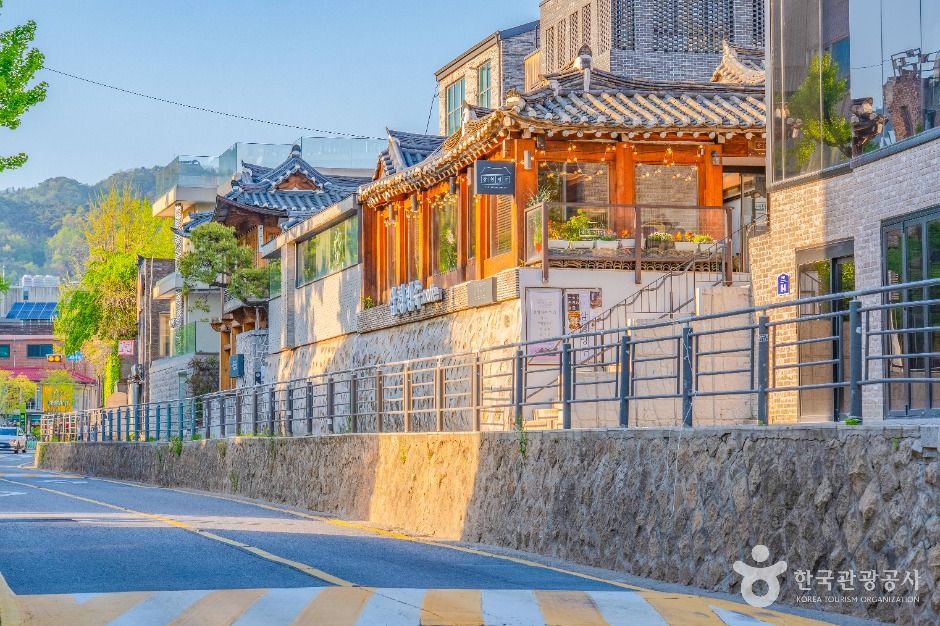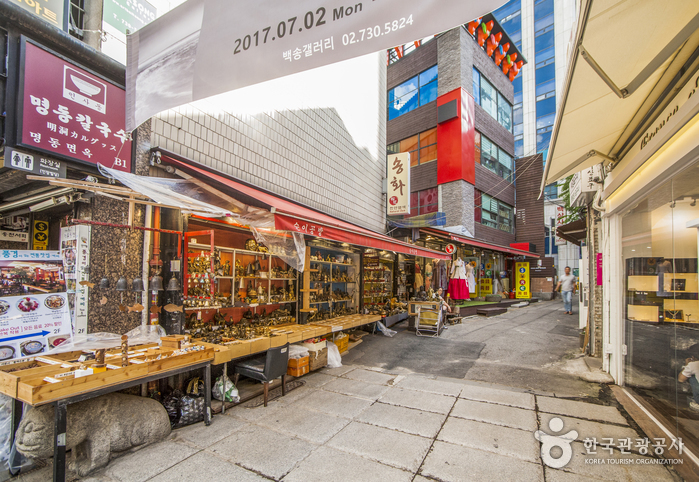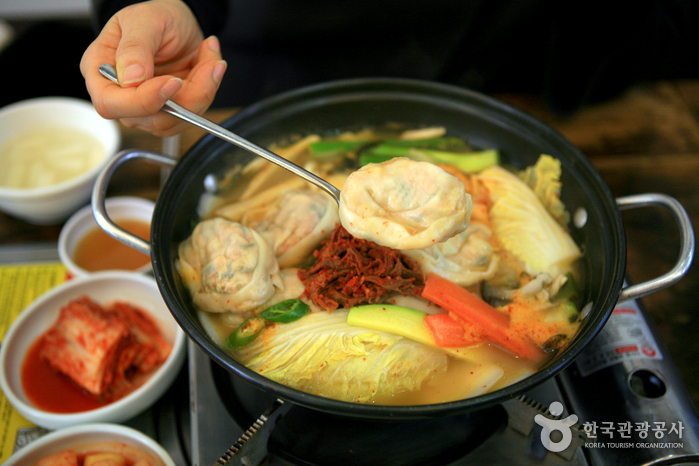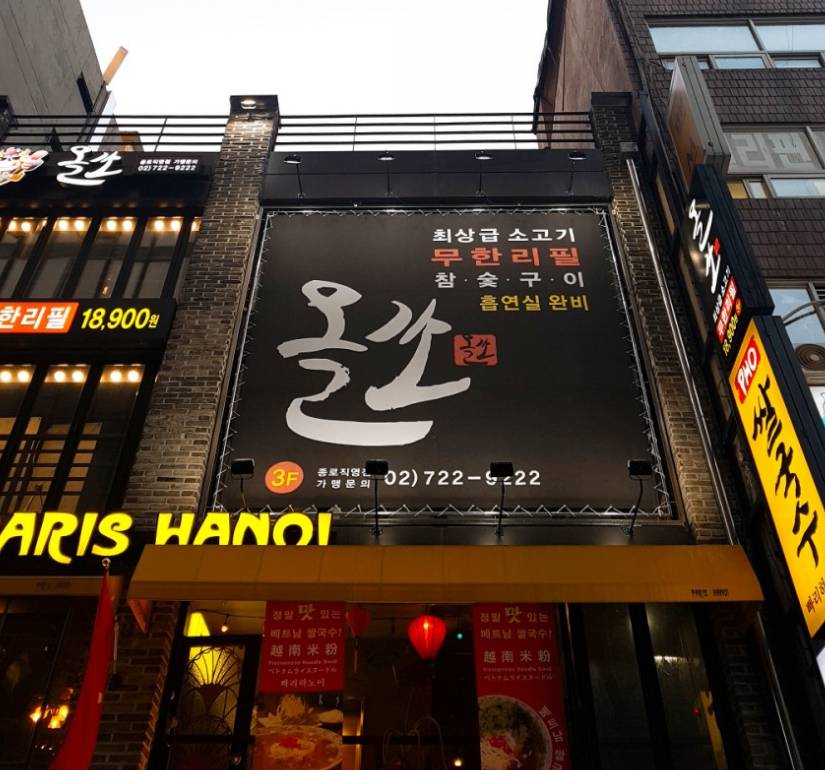Areumdaun Cha Bangmulgwan (Beautiful Tea Museum) (아름다운차박물관)
12.1Km 2025-05-27
19-11, Insadong-gil, Jongno-gu, Seoul
In addition to gourmet restaurants, traditional tea houses are a popular destination in Insa-dong. Among them, we recommend Areumdaun Cha Bangmulgwan, where you can taste more than 100 types of tea, including Korean, Chinese, Japanese, and Taiwanese. The shop also serves as a museum and gallery. Enjoy a leisurely cup of tea as you appreciate the art that is on display.
Calle Samcheongdong (삼청동거리)
12.1Km 2025-08-13
Samcheong-ro 156, Jongno-gu, Seúl.
El paseo Samcheongdong abarca desde el este del palacio Gyeongbokgung hasta el túnel Samcheong. El Parque Samcheong, ubicado al final del paseo Samcheongdong, es famoso por sus densos bosques y su hermoso paisaje. Es un lugar tranquilo e ideal para descansar en el centro de la ciudad. Además, las galerías y los cafés a ambos lados de Samcheongdong son muy concurridos por artistas.
Nwijo (뉘조)
12.1Km 2024-11-28
27, Insadong 14-gil, Jongno-gu, Seoul
+82-2-730-9311
Nwijo (뉘조) is a Korean restaurant specializing in wild vegetable cuisine. The name ‘Nwijo’ means ‘the god of the silkworm,’ and likens wild vegetables to silkworms in that both can be eaten in their entirety. The restaurant serves original full-course Korean meals that are prepared using hundreds of kinds of wild vegetables, including special seasonal vegetables.
A typical full-course meal starts with delicious pumpkin porridge, followed by seasoned wild vegetables, root vegetable ssam (condiments wrapped in vegetable leaves), slices of boiled meat, and steamed lotus leaf-wrapped rice served with jjigae (Korean stew) and various side dishes. This kind of traditional feast is pleasing to both the eye and the palate and is topped off with sikhye (traditional sweet rice drink). Lunch specials are also available.
Cementerio Nacional de Seúl (국립서울현충원)
12.1Km 2025-07-02
Hyeonchung-ro 210, Dongjak-gu, Seúl.
La parte de atrás del Cementerio Nacional de Seúl está rodeada por los picos sagrados de las montañas de Dongjak, que se conectan con el monte Gongjaksan formando los picos del monte Gwanaksan. En el frente, el cementerio mira hacia el río Hangang.
El Cementerio Nacional de Seúl está situado en una superficie de aproximadamente 1.430.000 ㎡. Aquí descansan los restos de 165.000 mártires y soldados, policías, y fuerzas de reserva que sacrificaron sus vidas por su país. En la Memorial Tower se encuentran los recordatorios de unos 104.000 soldados fallecidos durante la Guerra de Corea, pero cuyos cuerpos nunca fueron encontrados, junto con 7.000 cadáveres de unos 7.000 soldados desconocidos. Los restos de más de 54.000 patriotas están enterrados en el cementerio, que está dividido en varias secciones: tumbas de soldados, policías, ciudadanos de mérito, y figuras clave del gobierno provisional. Cada año, el 6 de junio, se celebran servicios funerarios y diversos eventos para recordar a estos valientes patriotas.
Las instalaciones consisten en la Puerta Conmemorativa, la Torre Conmemorativa, la Fuente Chungseong, el Campo Santo, la Sala de Exposición Fotográfica, el Cine de Películas Educativas y la Sala de Exhibición de Reliquias. En 1955, el cementerio fue nombrado Cementerio Militar Nacional, para después ser elevado al estado de Cementerio Nacional en 1965. En 1996, el organismo que lo administra cambió de nombre, pasando de ser "Oficina de Administración del Cementerio Nacional" a "Organización del Cementerio Nacional".
Insa-dong Antique Art Street (인사동 고미술거리)
12.1Km 2025-08-04
29, Insadong-gil, Jongno-gu, Seoul
As of today, there are approximately 70 shops in the Insa-dong area that sell antique arts. Some of the products they sell include antique artworks, porcelains, woodcrafts, and metalwork. Visitors may even find rare and valuable products such as earthenware from the Silla period or white porcelain used in the Joseon dynasty. Each shop is a specialty store, authorized to sell product types that are of their expertise, ranging from antique furniture and traditional artworks to handcrafted items.
Gaeseong Mandu Koong (개성만두 궁)
12.1Km 2021-03-24
11-3, Insadong 10-gil, Jongno-gu, Seoul
+82-2-733-9240
Gaeseong Mandu Koong has served Gaeseong-style mandu (dumplings) for more than 30 years. The elderly proprietor, who fled south during the Korean War runs this restaurant with the help of her granddaughters. Characterized by its delicate taste, Gaeseong mandu stuffing consists of pork and various vegetables such as Chinese cabbage and pumpkin. This restaurant's mandu is so popular that it sometimes gets sold out even before evening. Typical menu includes mandu-jeongol (hot pot) and mandu-guk (soup). The hot pot is made of various ingredients including mandu, rice cakes, mushrooms, and meat, and serves two to three persons. For several persons, it's recommended to eat bossam (boiled meat slices wrapped in lettuce leaves or kimchi) and Korean-style pancakes.
Allsso (올쏘)
12.1Km 2021-08-26
30, Jong-ro, 14-gil, Jongno-gu, Seoul
+82-2-722-9222
A barbecue specialty restaurant located in Cheonggyecheon Stream, Seoul. A Korean BBQ restaurant. The most famous menu is grilled beef.
Eun Ha Su (은하수)
12.1Km 2021-10-20
145, Toegye-ro, Jung-gu, Seoul
+82-2-3705-9141~2
Eun Ha Su at Sejong Hotel was opened in 1978 as Elysee, the first Korean buffet in Korea. For the past 30 years, the restaurant has gained acclaim for its healthy and nutritious Korean cuisine, attracting both Korean and international diners.
Calle Gyeongnidan-gil (경리단길)
12.1Km 2025-07-30
Itaewon-dong 210-65, Yongsan-gu, Seúl
Seoul Sejong Hotel (세종호텔)
12.1Km 2021-06-07
145, Toegye-ro, Jung-gu, Seoul
+82-2-773-6000
Seoul Sejong Hotel is located in Myeong-dong, a heart of Seoul’s shopping, tourism, and business districts. Approximately 1 hour from Incheon International Airport, hotel guests can enjoy many attractions nearby as well as a spectacular panoramic view of beautiful Namsan Mountain and downtown Seoul.






 Español
Español
 한국어
한국어 English
English 日本語
日本語 中文(简体)
中文(简体) Deutsch
Deutsch Français
Français Русский
Русский